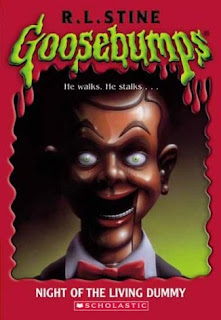Meditative,
brooding, imperfect, also remarkable, the new James Bond adventure Spectre, directed by Sam Mendes, marks
the third time the series has reached the status of a breathing, ambiguous work
of art. The last two heights, On Her
Majesty’s Secret Service and 2012’s pop dream Skyfall, combined the sleekness of franchise cool—cars, world
travelling, sexual indulgence, action—with human personality and resonant entanglements.
They
created a utopia of franchise tropes and thematic richness, culminating in the
fusion of past and present in Skyfall’s
masterful climax at Bond’s childhood manor. Quoting the unlikely sources Les Vampires and Under The Volcano (book and film) Spectre didn’t leave me walking on a cloud like Skyfall but it isn’t trying to be the
previous movie. The Bond films have turned Mendes, previously a middlebrow
hack, into a possibly great director. He interrogates and celebrates Bond in
equal measure. If not the most notable instance of an auteur doing new,
creative things with a recognizable icon since Godard took up Lemy Caution,
Mendes’ extraordinary 007 films offer mainstream lift and an autodidact’s
hermetic concerns.
Start
with Under The Volcano. Spectre begins with a ravishing vista of
Mexico City on the Day Of The Dead, the enormous skeleton parade float
recalling the opening credits of John Huston’s adaptation of the Malcolm Lowry novel.
In an illusion of sustained tracking the camera cranes down to find Bond
wearing a skull mask and walking towards another dalliance with a woman. Like
Lowry’s Consul (and Albert Finney’s definitive drunkard walking dead performance in Huston’s
film) Bond is a man living in extremes and always threatening to die. He also
admits to drinking “too much.”
Recalling Timothy Dalton’s actorly professionalism, Craig is never likable,
always fascinating. Who is this guy? When Spectre’s
oneiric story unfolds and we find that a shadowy villain (Christoph Waltz) has
been the cause of all of Craig’s Bond’s losses and heartache over the previous three
installments—“I’m the author of all your pain” being a line so genius Sorkin
could never think it up—Craig’s, and the series’, continuity reveals itself to
be one Rivette-length epic. Spectre begins
by aligning Bond with one of the great characters of British literature and
then goes further, enmeshing him into a secret society that recalls Feuillade’s
cloak and dagger trickery and, by extension, Rivette’s. The action scenes are
good and serviceable in the Mendes Bonds—Spectre
includes a dazzling train fight and boat/helicopter showdown climax—but the
cultural recalls and sheer invigorating pulse given to the material makes these
recent movies singular classics.
Since
rebooting the series with 2006’s Casino
Royale, the Craig Bonds have reimagined villains, plotlines, images and
characters from the Broccoli series in ways that make Bond contemporary and
mythic. 2009’s Quantum Of Solace was
a largely failed attempt to make Bond Bourne yet it contained the
forever-haunting image of a nude female conquest covered in oil, a response to
the classic lover’s death in Goldfinger and
a prescient reminder of where Bond stood in today’s uncertain quagmire of
terrorism and politics.
Quantum was made by a director, Marc
Forster, who possessed neither movie sense nor a love for Bond. Mendes has
both. Beloved characters like M (Ralph Fiennes), Q (Ben Wishaw) and
Moneypenny (Naomie Harris) are
given showier roles and become integral to the narrative melee. The Bond Girls
(Lèa Seydoux and Monica Bellucci) are fleshed out women yet still filmed with
sexy radiance (a shot of Bond introducing himself to Bellucci while in front of
a mirror questions the series’ history of objectification). Traditional Bond
scenes like the car chase, the pursuits by the henchman, the aquiring of
gadgets and journey to the villain’s lair are shot with high cinematic
standards, true pop immersion and love. Yet Mendes and his writers (among them
John Logan, author of the classic screenplays Any Given Sunday and The
Aviator) don’t forget that Bond is, like Geoffrey Firmin, a man living with
death and loneliness. Spectre is
airier and more deliberate than past Bonds; an almost funeral essence hangs
about its edges. It might be the art film of the year.
Though
the final scenes aren’t as inspired as perhaps they should be, and the showdown
with Waltz’s major character lacks catharsis, Spectre brings Craig’s Bond story to a rousing conclusion. His
movies as the character click together like no other Bond actor’s. So what if,
as early reviews have charged, it doesn’t “Make sense”? Neither does Feuillade,
most Hitchcock, most De Palma, most movies. Neither does Under The Volcano. The aestheic rush: Now that’s a neat trick.













